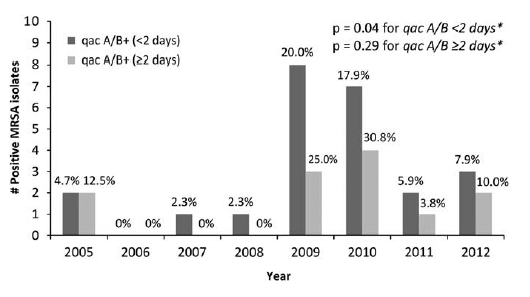Guest Post: Ebola and the Reversal of Transmission Dynamics
 |
| L. Silvia Munoz-Price, MD PhD |
There is an interesting phenomenon occurring during this Ebola outbreak. The relationship between health care workers and personal protective equipment (PPE) has shifted. Let’s state a fact: up until now, most Infection Control providers have permanently struggled to ensure compliance with the use of gowns, gloves, and hand hygiene among healthcare workers. Even though all healthcare workers know these interventions (PPE and hand hygiene) are necessary to prevent transmission of pathogens among patients, healthcare workers persist being non-compliant with these measures. Why do we continue behaving this way? This is probably due to several factors, but one of the most relevant ones might be our inability to pinpoint whose non-compliance end up causing acquisition of hospital pathogens to individual patients. So, when patient X gets Clostridium difficile colitis on day 15 of hospital stay, who among the dozens of providers in contact with patient X caused this transmission? Nobody can tell. The result is a lack of accountability of medical teams.
This topic reminds me of healthcare worker’s attire. We know that white coats are laundered on average every 14 days but scrubs are spontaneously laundered by providers every day. The former is in contact with patients and the latter is in contact with the provider’s skin. Why this difference in laundering frequency? Could it be that we care of our well being much more than what we care of our patients?
Many times I have discussed with hospital leadership about why there is such a difference in compliance with protocols between airplane pilots and healthcare workers. We thought this difference was probably due to the fact that if airplane pilots are not compliant…they die. In comparison, if healthcare workers are not compliant with hand hygiene or PPE usage…nothing happens to them.
Ebola has clarified this point for us. This tiny virus has successfully reversed the transmission dynamic in hospital settings. Now healthcare workers are not the only one spreading disease across the unit …now healthcare workers are actually getting sick if they are not compliant with infection control practice. What is the result? We are frantically re-learning how to cover every inch of our bodies before and after patient contact. That said, I understand that the mortality in West Africa has been very high, which is causing a generalized state of panic, but so far we are observing that patients treated early and adequately seem to do just fine. Compare this with C. difficile colitis among our immunocompromised patients which causes thousands of infections a year. I understand that C. difficile is not in CNN 24/7, and fails to have an exotic name, but it can certainly be as devastating and much harder to treat than Ebola in US healthcare settings. So, let’s reflect on our current state of generalized paranoia. Maybe patients with C. difficile, CRE, MRSA, VRE acquired in the hospital should run the same press campaigns 24/7 clamoring for better compliance with PPEs and hand hygiene among healthcare providers.
So, let’s think again about our behavioral drivers to comply with PPE and hand hygiene…maybe the answer to improved compliance with these interventions is to have a strain of C. difficile that would make healthcare providers sick.




It's funny: We just created an amazing Infographic on "Ebola Virus. What Is It? Interesting Facts" because we found people were missing the essential facts about Ebola.
ReplyDeleteCheck it out: www.BioMedicalWasteSolutions.com/What-Is-Ebola/
Let me know what you think:)